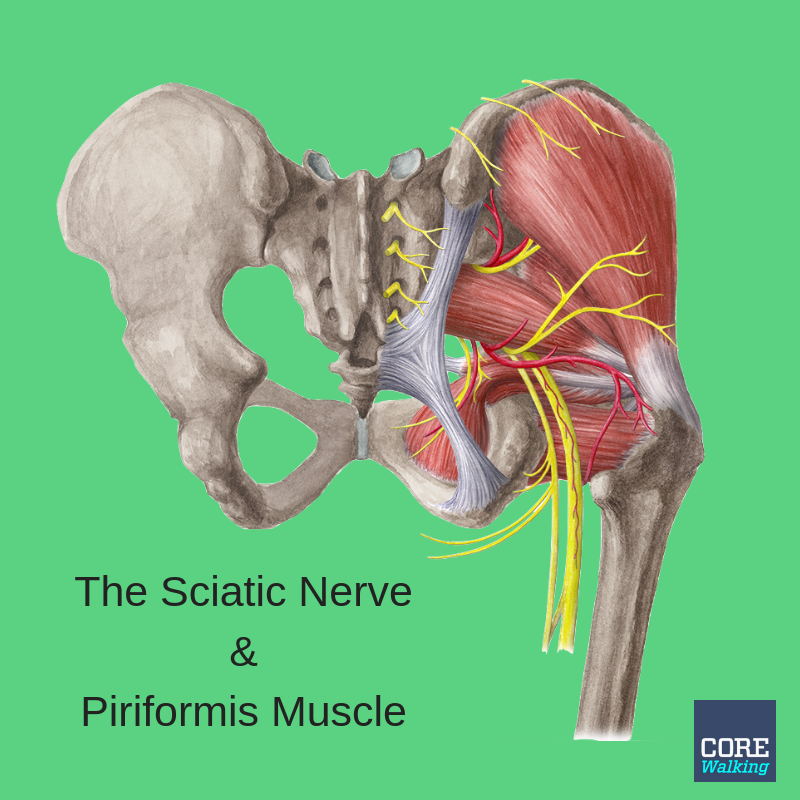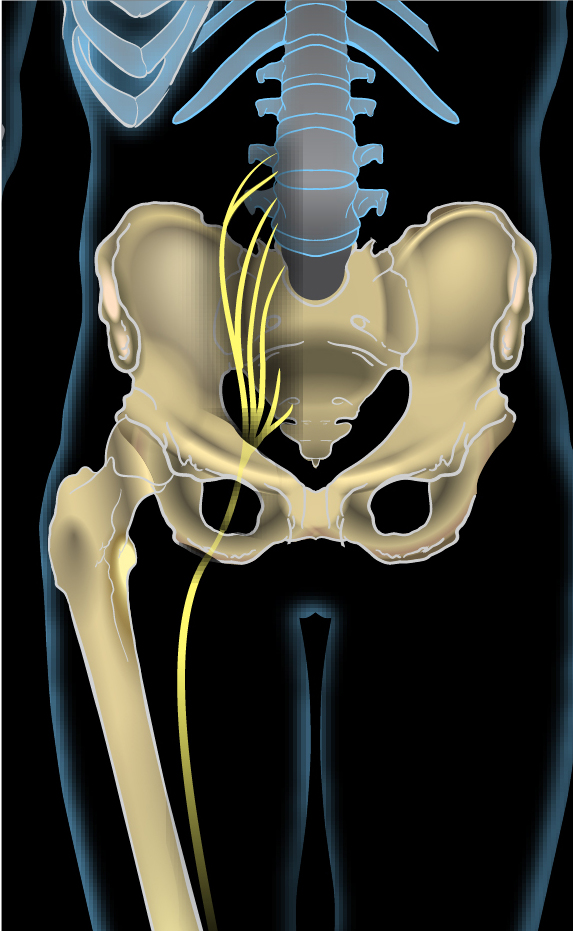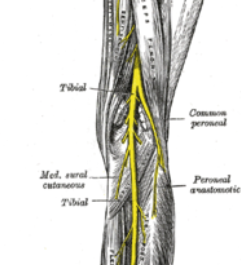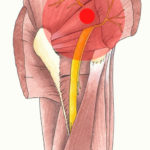
The Sciatic Nerve And Piriformis Muscle
The sciatic nerve and piriformis muscle.
The sciatic nerve is the body’s longest nerve and can be compromised at many different points along its journey.
Five nerve roots come out of the lower spine to meet up and gather behind the piriformis muscle.
The piriformis muscle connects from the outer leg to the front portion of the sacrum.

The five nerve roots become two nerves — the tibial & peroneal — that are encased in the sciatic sheath.
So technically there is no sciatic nerve. But I will continue to refer to these two nerves as one sciatic nerve.
The tibial and peroneal nerves are wrapped in the sciatic sheath which runs to the knee and then the nerves continue separately on their path down the shin to the foot.

At the point where the sciatic nerve is formed at the piriformis muscle, it is the thickest nerve in the body. It is probably about the size of your index finger.
The piriformis muscle is an external rotator which means it turns the foot and leg out. Think of taking your leg out of a car as a clear example of the piriformis at work.
If the piriformis is tight or goes into spasm, it can press on the sciatic nerve and create the problem known as piriformis syndrome.
 If you’ve got a pain in the butt that travels down the leg it is likely to be piriformis syndrome.
If you’ve got a pain in the butt that travels down the leg it is likely to be piriformis syndrome.
Pain beginning in the lower back that relates to the sciatic nerve is referred to as sciatica.
The sciatic nerve and piriformis muscle can and should live in harmony but often don’t.
Both sciatica and piriformis syndrome are problems with the sciatic nerve.
Our bones hold us up. Our muscles move the bones. The nerves tell the muscles to move the bones.
In order for the muscles and nerves to work best the bones need to be properly aligned.
When the bones are misaligned we have opened the door to all sorts of muscle and nerve issues.
If we want the sciatic nerve and piriformis muscle to get along well we need to align our bones successfully.
Creating space in the pelvis when we walk and stand is a great and simple way to find some ease in both Sciatica and piriformis syndrome.
Good posture rules!
